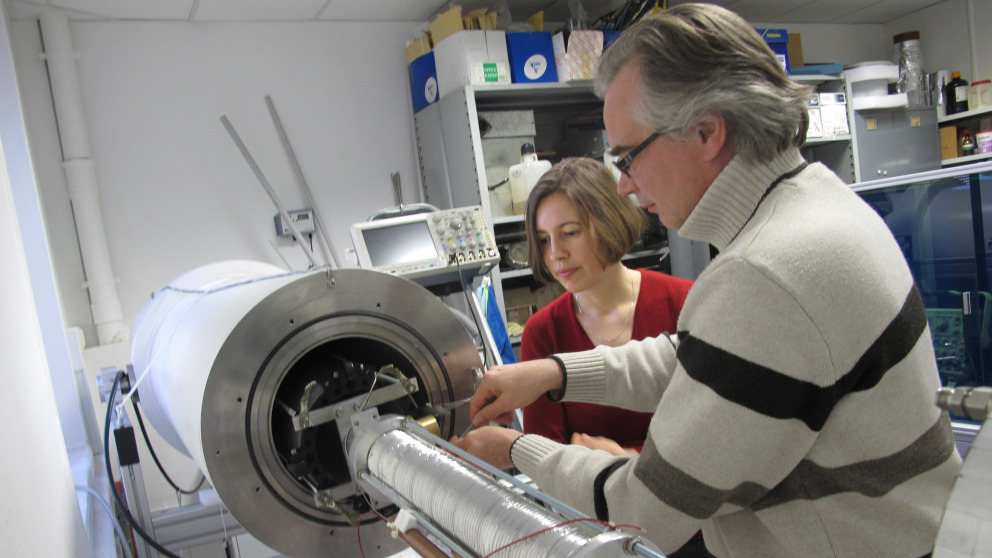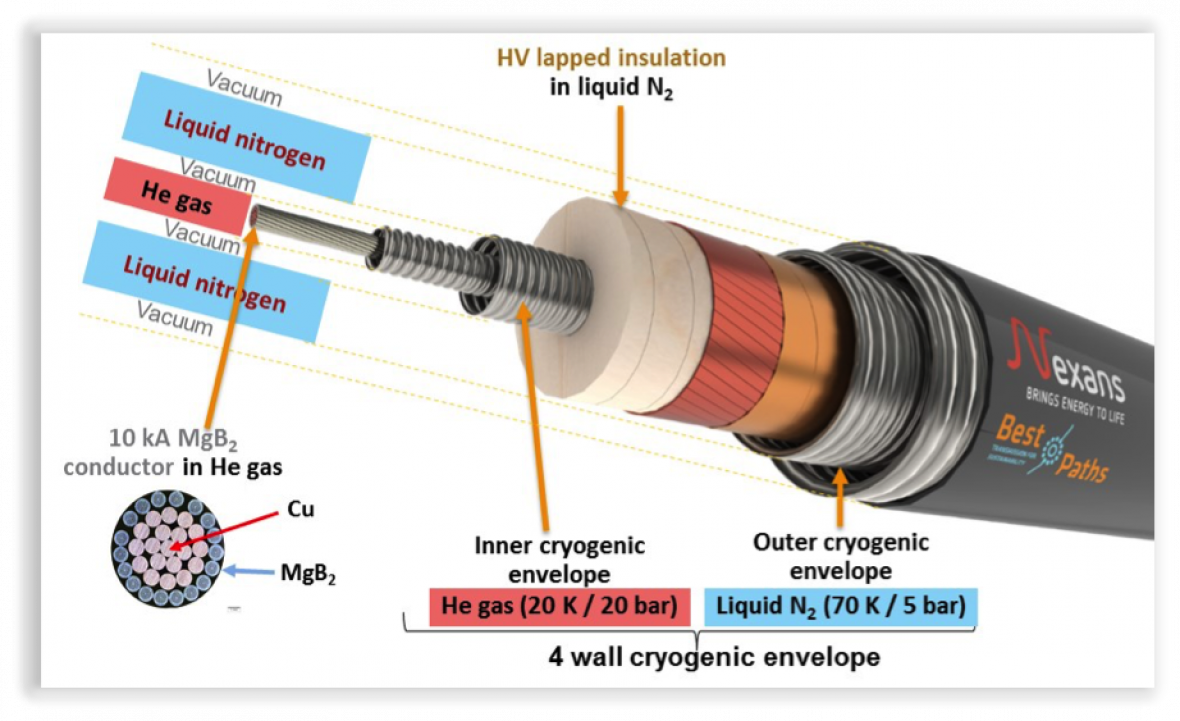Novel Insulation for Superconducting Power Cable Withstands Low Temperatures and High Operating Voltage
31.01.2018

“We created an electrical insulation structure with multiple layers of paper immersed in fluid nitrogen. The paper gives the cable sufficient flexibility, allowing it to shrink when it cools down. Such nitrogen-impregnated insulation has very high electrical performance and is also self-healing, which is very safe for operation,” says project coordinator Christian-Eric Bruzek of Nexans. The results of this experiment were published in a scientific journal in January.
The researchers were particularly interested in finding out whether a space charge builds up over time in the insulation. Never before had such tests been conducted at such low temperatures and high operating voltage. “Even the best insulation material is not perfect, and a small amount of charge always enters the insulator. The danger is that this charge will get trapped and build up within the insulation to create an additional electrical field. When it then discharges, it can eventually lead to a breakdown of power transmission,” IASS scientist Adela Marian explains. Researchers at the ESPCI designed an experimental setup and conducted measurements to detect the accumulation of space charge in the insulation.

The findings are promising. No space charge was found in the insulation in any of the measurements. The risk of a local electrical field causing a sudden collapse when the cable is in operation thus seems negligible. This suggests that the use of this type of insulation for the magnesium diboride (MgB2) superconductor and other superconducting devices in the electricity grid is perfectly safe.
This research is a part of the EU’s Best Paths research initiative to explore the potential of superconductors to transport electricity. Superconductors could help integrate the growing share of renewable energy into Europe’s power supply. Because the cables will be underground, take up very little space, and transport large amounts of electricity, they have a small ecological footprint and, unlike overhead high-voltage lines, do not impact the appearance of landscapes.
